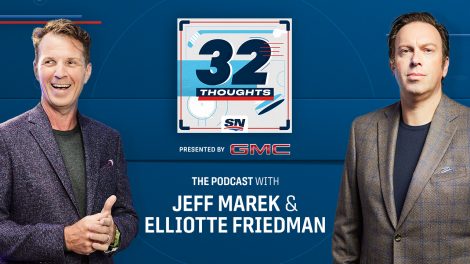Now we can truly label this a rebuild for the Toronto Maple Leafs.
The salary cap implications of Tuesday’s massive Dion Phaneuf trade with Ottawa are significant, and bring the window for when the Leafs should be in an optimal position to start spending money on talent more clearly into focus.
You can circle 2017-18 specifically, which comes after an off-season where yet another Tampa Bay Lightning star – Victor Hedman – could hit the open market. But that’s not really a topic for today.
What the Leafs needed more than anything was flexibility, both for adding better players and also for inevitably paying their own. Morgan Rielly is due a nice raise as he exits his entry-level contract this summer, and William Nylander, Mitch Marner and others shouldn’t be too far behind.
What they didn’t need was $20.25 million in cap space tied up long term in two players on the wrong side of 30 – Phaneuf and David Clarkson – and the fact they’ve now rid themselves of all but the $1.2 million retained on Phil Kessel’s deal annually is a feat in cap management.
Of particular significance here is the fact Toronto both shed Phaneuf’s contract while also adding assets: Tobias Lindberg, considered a decent prospect by scouts, and Ottawa’s second-round draft pick in 2017. That fits in with what the Leafs are trying to do big picture and impressed some executives from rival teams.
All things considered, it’s little wonder why GM Lou Lamoriello told reporters “I think we had no choice” but to make this trade. The Leafs moved quickly as soon as Ottawa GM Bryan Murray mentioned his interest in Phaneuf over the weekend.
“This was a transaction that certainly wasn’t for today,” said Lamoriello. “Dion is going to leave a hole in our lineup, there’s no question, but I think as I’ve said continuously – what the overall plan is, that when you have an opportunity to do this (you do.)”
Of course, if they had been a team with a strict internal budget like the Senators, they probably wouldn’t have been able to pull it off. The Leafs assumed all three of Ottawa’s albatross contracts that run through next season by taking on Jared Cowen ($3.1-million cap hit, but due $4.5 million in salary in 2016-17), Milan Michalek ($4 million) and Colin Greening ($2.65-million cap hit, but due $3.2 million in salary in 2016-17).
There’s a pretty good chance they don’t get very much in return for that $9.75 million in cap space next season. They also have the option to mitigate their exposure by buying out Cowen’s deal this summer, which comes at a discounted one-third rate because he’s under 26 and would actually give them a rare cap credit in 2016-17.
(Alternatively, Cowen could get back on track under coach Mike Babcock, a fellow Spokane Chiefs alumnus, and become another asset for the Leafs.)
In the big picture, it’s a move that clearly signifies next season as another rebuilding year in Toronto. The Leafs entered play Tuesday tied for the fewest points in the league and probably won’t be much better – they’ll only be younger – in 2016-17.
Many were quick to link this move with the expected pursuit of free agent Steven Stamkos on July 1, but the direct tie really isn’t there. If anything, the Leafs might actually have more trouble fitting him into their immediate salary structure as a result of it.
However, they’ve put themselves into prime position to maneuver beyond next season and that opens up a world of possibilities, including adding a marquee free agent like Stamkos. We’ve already seen how they can spend their way out of a jam; it’ll be interesting to see what cap guru Brandon Pridham comes up with when they start to try and build.
“I don’t think there’s any letter in the alphabet left out: I think it’s A-to-Z,” said Lamoriello, when asked about his preferred method for stockpiling talent. “Whatever opportunity there is to make the Maple Leafs better, certainly it will be considered. And if it’s the right situation, it’ll be done.”
There was one small aspect built into Tuesday’s deal that hints at how active Toronto intends to be before the Feb. 29 trade deadline. The Leafs shipped five contracts to the Sens – minor-leaguers Matt Frattin, Casey Bailey, Ryan Rupert and defensive prospect Cody Donaghey joined Phaneuf – while taking back only four.
That left them with an extra contract slot – they’re at 48 out of the maximum 50 – to work with heading into the NHL’s trading season. At this time of year, in particular, the added flexibility is important.
Yes, the Leafs are open for business, more than willing to take on problematic contracts from other teams if they come with futures, and hope to be busy in the next two-plus weeks. As an organization they’re very much in a long-term frame of mind.
“I couldn’t really answer what’s going to happen next,” said Lamoriello. “I’ve always said: We’re going to have a five-year plan that’s going to change every single day.”
The picture he’s looking at changed in a big way on Tuesday.









